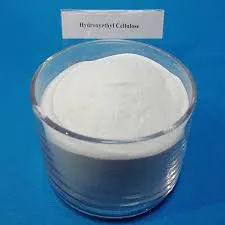
डिसेंबर . 05, 2024 01:40 Back to list
Exploring HPMC Excipients for Enhanced Drug Formulation and Delivery Solutions
Understanding HPMC Excipients in Pharmaceuticals
Hydroxypropyl methylcellulose (HPMC) is a widely used excipient in the pharmaceutical industry, known for its diverse applications and versatility. This semi-synthetic polymer derived from cellulose possesses unique properties that make it an essential ingredient in various drug formulations, including tablets, capsules, and topical applications.
What is HPMC?
HPMC is a modified cellulose compound, created through the etherification of cellulose with hydroxypropyl and methyl groups. This structural alteration results in a compound that is water-soluble and non-ionic, providing a range of functional benefits that enhance pharmaceutical formulations. Its chemical formula can be represented as C23H48O11, and it comes in several grades, with viscosity ranging from low to high, allowing formulators the flexibility to choose the appropriate type based on their specific needs.
Functional Properties of HPMC
One of the most significant properties of HPMC is its ability to act as a thickening agent, stabilizer, and film-former. This makes it particularly useful in the formulation of gel-like substances, creams, and emulsions, which are critical in the development of topical medications. Furthermore, HPMC maintains its viscosity over a wide range of temperatures and pH levels, ensuring consistent performance in various environments.
Another critical aspect of HPMC is its role as a binder in tablet formulations. It aids in holding the tablet components together, ensuring the structural integrity of the dosage form. Its binding properties also facilitate the drug release rate, making it possible to formulate both immediate and controlled-release systems. This is vital for enhancing bioavailability, allowing medications to be more effective by ensuring that active ingredients are released at the right time and in the right amounts.
Applications of HPMC in Pharmaceuticals
hpmc excipient

HPMC is utilized across a variety of pharmaceutical applications. In oral solid dosage forms, such as tablets and capsules, HPMC serves not only as a binder but also as a coating agent. This dual functionality helps improve the aesthetic quality of the medication while simultaneously enhancing its protection against environmental factors.
In the realm of topical formulations, HPMC provides desirable texture and stability to creams and gels. Its ability to form films can help in creating protective barriers on the skin, enhancing the delivery of medicinal compounds and improving the overall efficacy of topical therapies.
Moreover, HPMC is instrumental in the formulation of ophthalmic products. Its biocompatibility and ability to retain moisture make it an ideal choice for eye drops and other ocular formulations, providing lubrication and comfort to patients with dry eyes.
Safety and Regulatory Aspects
HPMC is generally recognized as safe (GRAS) by regulatory agencies such as the U.S. Food and Drug Administration (FDA). It is often utilized in food products, cosmetics, and pharmaceuticals, emphasizing its broad acceptance and minimal risk when used according to established guidelines. The rigorous testing and assessment processes that HPMC undergoes ensure that it meets the quality and purity standards required for pharmaceutical applications.
Conclusion
In conclusion, HPMC is a versatile excipient that plays a crucial role in modern pharmaceutical formulations. Its unique properties and functionality make it indispensable in tablet production, topical applications, and cosmetic formulations. As the pharmaceutical industry continues to innovate and evolve, the importance of excipients like HPMC will only increase, paving the way for more effective and targeted therapies. Understanding and utilizing HPMC effectively can lead to significant advancements in drug delivery systems and patient outcomes. As research continues, we can anticipate new applications and formulations that enhance the potential of this remarkable excipient.
-
Unlocking the Benefits of HPMC Products: A Gateway to Versatile Applications
NewsAug.07,2025
-
Unleashing the Potential of HPMC Ashland: A Comprehensive Look
NewsAug.07,2025
-
Tile Bonding Cellulose: The Key to Superior Adhesion and Durability
NewsAug.07,2025
-
Hydroxypropyl Methylcellulose Powder: The Versatile Component in Modern Pharmaceuticals
NewsAug.07,2025
-
Hydroxyethyl Cellulose: The Versatile Solution for Various Industries
NewsAug.07,2025
-
Hydroxyethyl Cellulose (HEC): The Versatile Polymer for Various Applications
NewsAug.07,2025







